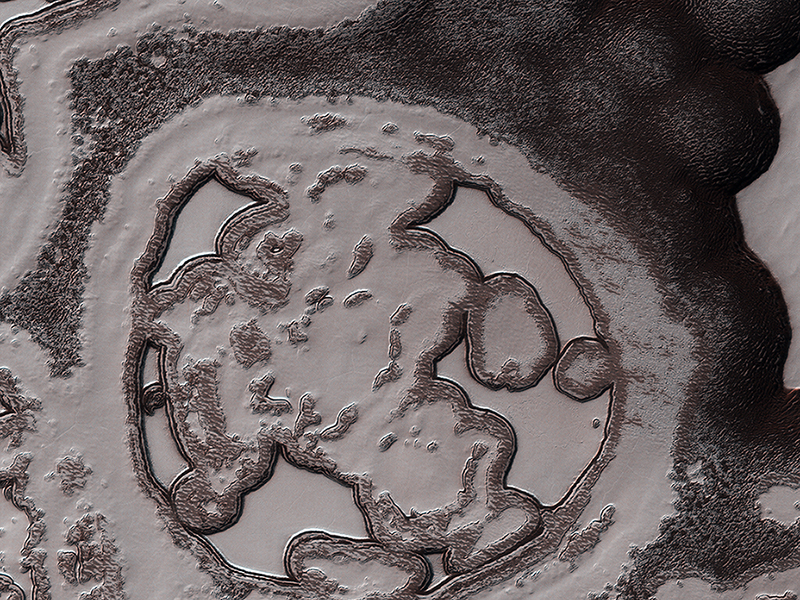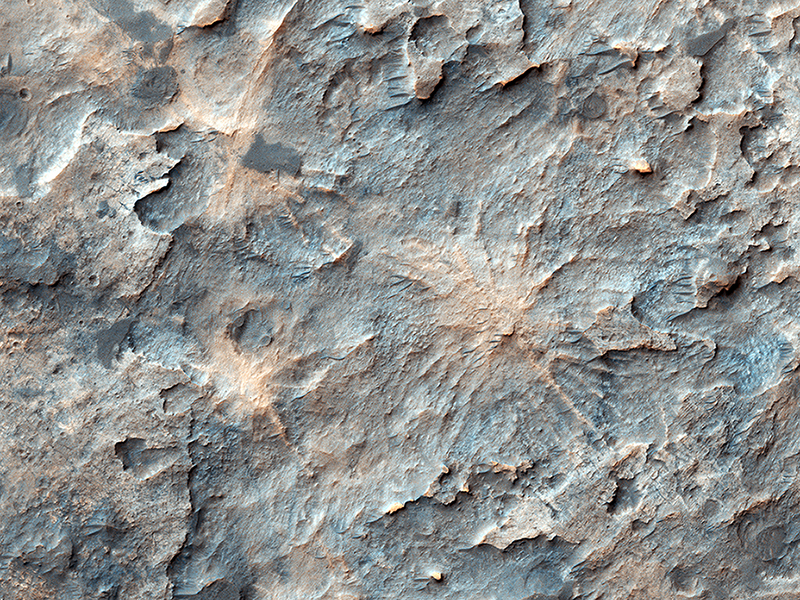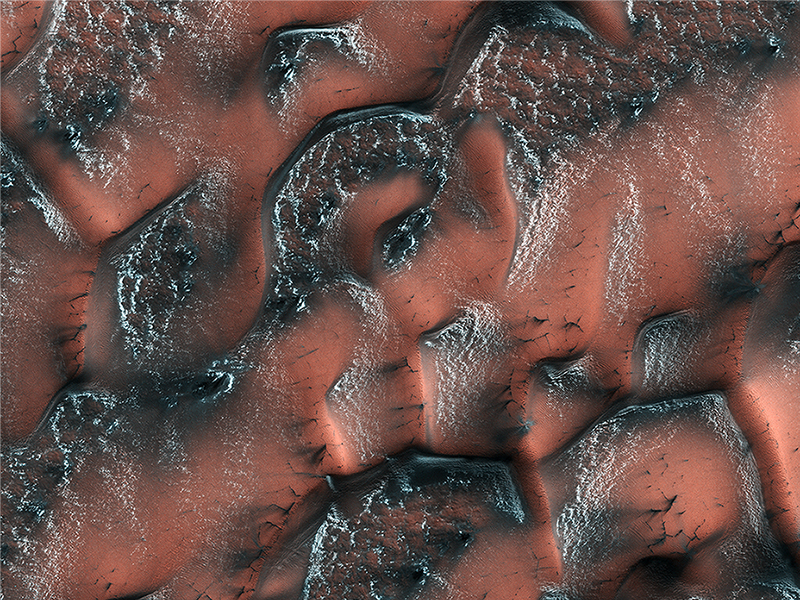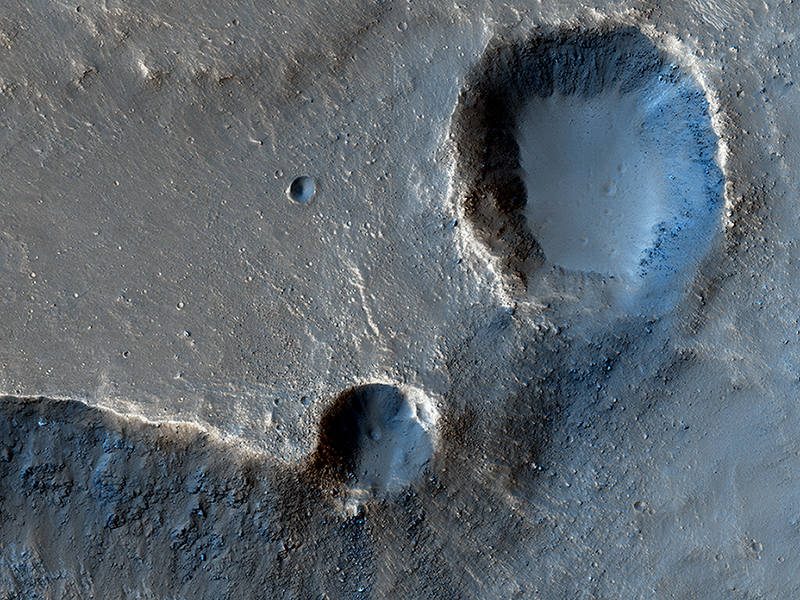Jon Kissi, Livio L. Tornabene and Eric Pilles wrote:Patterns Unique, Yet Familiar (ESP_050391_0955) (HiClip)
This close-up image gives the impression of looking like bacterial cells and their internal structures which travel and split in the process of life. These features are fractal in nature: the same image is preserved through different scales, with the pattern repeating eternally.
The reality is, we are looking at one of Mars’ polar regions; the South Polar residual cap to be precise, and, as with many things in Martian planetary science, there is a precise reasoning behind the name. With the coming and going of the seasons, this is an area on Mars where ice remains even after the peak of summer arrives.
The texture is very alien, bearing more of a resemblance to the universe of the very small, rather than the universe far, far away. But if this is a polar cap, then why does it not look like the polar caps on Earth? Indeed, there is no equivalent terrain observed here on Earth.
The so-called “Swiss cheese terrain,” referencing the numerous holes of the region, is a product of seasonal exchange between the surface and the Martian atmosphere. With a predominantly carbon dioxide content at 98 percent, the colder temperatures condense the gas out of the atmosphere to produce dry ice. The prevalence of water is more concentrated in the north, leaving the South polar region more carbon dioxide rich, and it’s this difference in composition that generates the unusual texture of the Swiss cheese terrain.
The Red Planet is one of the chief candidates in the search for life elsewhere in the Solar System; however, a quick glance at this image virtually gives the impression we have already found it.
NB: The cutout image has been rotated so that north is approximately up.
Candy Hansen wrote:The Hoodoos of Mars (ESP_050626_1565) (HiClip)
On Mars, we often see inverted river channels preserved perched above the surrounding terrain because the sediment inside the river channel was stronger than its surroundings. This is common in the American Southwest in places where lava flowed down river channels and the surrounding sandstone subsequently eroded away leaving ridges in places that started as valleys.
There’s another example of high-standing columns protected by a strong cap rock, called “hoodoos.” Looking closer at our image, we see what looks like a crater and its rays of ejecta, preserved and slightly higher than the surrounding terrain, possibly due to a similar process.
This is a stereo pair with ESP_050415_1565.
Candy Hansen wrote:A World of Snowy Dunes (ESP_050703_2560) (HiClip)
It is spring in the Northern hemisphere when we took this image. Over the winter, snow and ice have inexorably covered the dunes. Unlike on Earth, this snow and ice is carbon dioxide, better known to us as dry ice.
When the sun starts shining on it in the spring, the ice on the smooth surface of the dune cracks and escaping gas carries dark sand out from the dune below, often creating beautiful patterns. On the rough surface between the dunes, frost is trapped behind small sheltered ridges.
Candy Hansen wrote:The Case of the Missing Crater Rim (ESP_050746_1775) (HiClip)
Perched at the edge of an outflow channel, these two craters appear to have lost a portion of their crater rims during a flood event.
Alternatively, it is also possible that the craters impacted the edge of the outflow channel after the flood occurred and we are seeing the difference in the strength of the material impacted.
Credit: NASA/JPL-Caltech/University of Arizona
<< Previous HiRISE Update



